
Report highlights CQ’s value to the resources industry pages 4-5
Skills, royalties and decarbonisation on the lunch menu pages 10-11
The next generation of Bright Sparks page 13


Report highlights CQ’s value to the resources industry pages 4-5
Skills, royalties and decarbonisation on the lunch menu pages 10-11
The next generation of Bright Sparks page 13
Dramatically reducing Australia’s use of gas would secure the future of industrial manufacturing and the jobs of hundreds of thousands of workers, according to a bold new report that looks to reset the national debate about gas.
Commissioned by the Australian Manufacturing Workers’ Union (AMWU) and Lock the Gate Alliance, Springmount Advisory’s Turning Down the Gas report finds at least 90 per cent of industrial gas use can already be electrified or regassed with green hydrogen, and technology solutions are rapidly being developed for the remaining 10 per cent.
The report finds that supporting existing local industry to make the shift will secure jobs, eliminate the risk of gas shortages and free local manufacturing from the threat of volatile gas prices.
Under scenarios outlined in the report, gas demand would decrease 216 petajoules by 2035, reducing east coast wholesale gas expenses by at least $2.5 billion, and cutting greenhouse gas emissions by more than 11 million tonnes each year.
AMWU national secretary Steve Murphy said Australia must prioritise its finite and precious gas resources to support the industries that employ hundreds of thousands of highly skilled workers and underpin every aspect of our lives from food production and health to infrastructure and household goods.
“There is a clear national interest in ensuring that local manufacturing industries are supported and thrive as the world decarbonises,” he said.
“We commissioned this report because it is
clear to us that the interests of gas companies are cutting across the interests of Australian workers, Australian industry, our rightful place as the leader in our region for a fair and just industrial transition.
“I’m a firm believer that we can meet our commitments to climate action and create secure jobs in manufacturing if we make those two goals a national priority.”
The report finds:
• The three LNG terminals on Curtis Island near Gladstone make up 30 per cent of East Coast industrial gas demand. Restricting the sale of uncontracted gas for export would address short term shortage concerns, while the electrification or phase down of two of the three East Coast LNG facilities by 2035 would reduce domestic gas demand by 79 PJ.
• Replacing gas use in manufacturing with electricity using technology that is commercially available today would reduce demand by 112 PJ by 2035.
• Doing the same in commercial buildings would reduce gas demand by 25 PJ by 2035.
• “Regassing” and substituting metals smelting and refining, iron and steel manufacturing, and chemical manufacturing with green hydrogen would cut gas use by 62 PJ by 2035.
• Targeted government support including more research could help truly “hard to abate” sectors like cement and glass manufacturing wean themselves off fossil gas by 8 PJ by 2035.
Eight participants have graduated from Glencore’s 2024 Queensland First Nations Pathways Program (FNPP).
The program provides work readiness and training opportunities for Indigenous Australians who live on, or have connection to, the areas in which Glencore Coal operates in the Sunshine State.
Having completed the 26-week job-readiness training, six graduates have already gained employment at Glencore Coal operations.
Glencore Indigenous Programs coordinator Carrie Bendeich said the program was important in building essential job skills and education.
“The program is designed to equip participants with the necessary skills for employment and inspire them to reach their career goals,” Carrie said.
“Through the program our graduates have developed crucial skills and obtained all necessary mining qualifications. These skills not only prepare them for immediate employment but also equip them for long-term career success.”
Ms Bendeich also highlighted the broader impact of the graduates’ success on their home communities.
“The success of our graduates extends beyond their individual achievements. It inspires theirfriends,families,andneighbours,”shesaid.
“This ripple effect can lead to greater community engagement and more individuals pursuing their own career pathways, especially in regional areas like Woorabinda where employment opportunities are crucial.”
Deitmar Wachter, a graduate who hails from Woorabinda, excelled in the program, achieving 100 per cent attendance for six consecutive months.
“My goal is to be a heavy diesel mechanic, and thanks to the skills I learnt in the program, I’ve gained a place in next year’s Glencore Coal Apprenticeship program,” he said.
“I want to be a role model for my cousins

in the community, showing them that it can be done, and I hope that my achievement may inspire many of them to apply for the program next year.”
The FNPP is divided into two stages: jobreadiness training and mine site experience. These stages include inductions, medicals,
Telephone: 07 4863 5050
Address: 5-9 Hempenstall Street, Kawana, QLD 4701
EDITORIAL
Gregor Mactaggart Editor
E: gregor.mactaggart@CQToday.com.au
Matthew Pearce Journalist
E: matthew.pearce@CQToday.com.au
ADVERTISING
Cheryl Altouvas Advertising Sales
E: cheryl.altouvas@GladstoneToday.com.au
Cindy Unwin Advertising Sales
E: cindy.unwin@CQToday.com.au
Sherrie Ashton Advertising Sales
E: sherrie.ashton@CQToday.com.au
Kate O’Connell Advertising Sales
E: kate.oconnell@CQToday.com.au
life-skills, leadership training, and on-site work experience, offering career opportunities in a range of roles, from operators to warehouse assistants, trades assistants, and bench support.
“It’s terrific that six participants have already secured employment and we’re confident that all eight graduates will go on to succeed in their
chosen fields,” continued Carrie.
“It’s wonderful to watch their careers develop in the months and years ahead.
“Many former FNPP participants are still employed with Glencore, and are now mentoring and supporting the new groups, which is a testament to the program’s lasting impact.”
Vodafone is promising improved 4G and 5G mobile phone services in Central Queensland as it completes a network expansion.
The mobile operator will switch on its expanded network in early 2025 after tripling the number of mobile sites it has in regional Australia.
Once live in early 2025, customers will have immediate access to 5G where available and across the country 4G coverage will widen to one million square kilometres (originally 400,000 sq km).
An additional 59 mobile sites will be connected in Central Queensland.
Vodafone’s head of customer wellbeing Jonathon Kirkham said the network would provide better coverage, performance and
speed for customers.
“This will be a game-changer for regional Australia, giving millions of customers living, working and travelling right across the country, access to the award-winning value, and service Vodafone customers in the city enjoy,” Mr Kirkham said.
The expansion has been made possible through an innovative network sharing deal between Vodafone and Optus in regional Australia.
Under this arrangement, Vodafone will access 2,444 Optus mobile sites in regional Australia to expand its network reach.
The two telcos will also share their wireless spectrum - the invisible airwaves that make mobile services possible - to deliver improved service quality and speeds for cus-
tomers.
“Not only is this great news for locals, it’s also great for those who travel throughout the region on the Capricorn, Burnett, Bruce and Leichhardt Highways,” Mr Kirkham said.
Vodafone consumer group executive Kieren Cooney described this as a turning point for the Australian mobile phone market.
“We’re breaking the mobile duopoly that has limited customer choice in regional Australia for too long. We’ve listened to our customers and are excited to say Vodafone’s coming to town,” he said.
This news comes after the issues generated due to the shutdown of the 3G network in late October, which has had an enormous impact on residents and small businesses, particularly in rural and regional areas.
By Gregor Mactaggart
Central and Western Queensland’s interests were put on the table as Regional Development Australia leaders met with State Regional and Rural Development Minister Dale Last earlier this month.
The inaugural meeting saw Regional Development Australia (RDA) delegates map out a shared vision for their communities and identify opportunities for collaboration and investment.
RDA Central and Western Queensland director for regional development Tony Gambling was among the eight delegates, joining representatives from Townsville/North West Queensland, Greater Whitsunday, Wide Bay Burnett, Darling Downs/South West, Logan/ Redlands, Gold Coast and Moreton Bay/Sunshine Coast.
“We were fortunate to get the opportunity meet with Minister Last, the Regional and Rural Development director-general (Graham Fraine) as well as other RDA regional leaders to begin the process of collaboration to supercharge our agenda for regional and rural Queensland,” Mr Gambling said.
Water and energy costs, and availability were two of the biggest issues facing not only
Central and Western Queensland, but other regional communities.
Mr Last said it was a major agenda item during his first term in government along with identifying major infrastructure projects that would be the key to unlocking rural and regional growth across the Sunshine State.
“I’m committed to working with my colleagues to improve water and energy security as this is vital to liveability and attracting new investment (in regional Queensland),” he said.
“I have asked each of the representatives to report back on their highest priority projects and opportunities for investment, and I’m looking forward to working with each region going forward.”
Mr Last said the new state government’s door was open for collaboration and consultation.
“Our first meeting was an opportunity to reset how the government will work with RDA,” he said.
“The RDA representatives have their fingers on the pulse of their communities and we want to tap into their knowledge to better understand each region’s priorities, so we can help to unlock the full potential of the individual regions.”

By Di Stanley
The operators of Blackwater’s Rosewood Workers Village are urgently seeking to remove a dual development approval sunset clause that could force its closure as early as 2025.
Qantac was granted development permits for the 788-room non-residential workers camp by the Minister for Economic Development Queensland, the first for 684 rooms in August 2016 followed by 104 rooms in November 2016.
In a report to the Central Highlands Regional Council’s planning department, consultant town planner Bill Gannon said the imposition of a sunset clause was unreasonable and would create “a range of significant adverse social and economic impacts”.
Qantac’s application is to also consolidate the two development permits relating to Rosewood into one.
“It would be illogical and wasteful to abandon the fully serviced, purpose-designed facility,” Mr Gannon said.
“To take Rosewood Workers Village out of the accommodation supply in the Blackwater region would be untimely and counterproductive.
“If the facility was to close operation, there would be no practical option in Blackwater for accommodating the workers living in the village.
“Some workers might seek housing via the town’s limited rental market, with likely price hikes and adverse impacts on low-income renters.
“Nearby motel accommodation is limited and would not provide the services required.”
Qantac has established contracts with coal companies BMA, Curragh and Constellation Mining and houses workers from the railway, wind and solar farms and other public sectors at the Rosewood camp.
It has also been used for short-term government employees working in the region.
Mr Gannon said despite having 13 other short-term facilities in town, Blackwater was ill-equipped to take absorb an overflow of such magnitude if Rosewood was denied the sunset clause removal.
On any given day, Rosewood has around 550 workers on the site, operating at 70 per centcapacitywhichisacceptedasindustryfull capacity occupancy standard for shift worker

rotation, room availability and servicing.
Mr Gannon said with an average spend on a week-long stay at Rosewood was $500 per worker.
“This represents a spend of in the local community of $1 million a month or $12m in a year,” he said.
“This is spent in shops, chemists, service stations and other outlets,” he said.
“Rosewood pays over $1 million in rates, Qantac overall pays close to $2 million.
“Qantac contends that the demand for ongoing workers accommodation is strong and requires the continuation of the Rosewood facility.
“Rosewood has become an important piece of infrastructure for the Central Highlands and especially Blackwater.”
Mr Gannon said he was puzzled that Rosewood was singled out by the insertion of a sunset clause.
“I understand no other council-approved workers accommodation facility in Blackwater has a sunset condition,” he said.
“Rather, those approvals follow normal approval timelines allowing market conditions to determine the life of the facility.
“It is not as if the site is needed for another land use.”
In November 2023, the Today News Group revealed that five years to the day after the Rosewood camp opened, 25 rooms set aside for use by town locals for affordable housing or emergency accommodation by the Urban Land Development Authority in its approval conditions sat vacant.
Qantac is soon to open its 492-unit Waratah Workers Village to the immediate southeast of the Rosewood complex on the eastern entrance to Blackwater.
The development was first approved by the Urban Land Development Authority in June 2012.
The same 25-room availability for locals in crisis condition was attached to the Waratah village development application in its early stages with the Central Highlands Regional Council.
The Village on Blain’s development application for a $40m expansion of the complex by adding 450 more rooms have been lodged with the council.
A 30-business-day public notification period is currently taking place.
By Gregor Mactaggart, Di Stanley and Shelby Gurney
Central Queensland’s status as a resources powerhouse of the Sunshine State has been reaffirmed in a new report.
The numbers for the Fitzroy region, which takes in the Gladstone, Rockhampton, Central Highlands, Banana and Livingstone local government areas (LGA), feature in the 2023-24 Queensland Resources Council (QRC) Economic Contribution Report.
Fitzroy’s resources industry injected $12.5 billion into the state economy’s gross regional product in the past 12 months.
The sector employs the second-largest workforce in Queensland and drives the thirdhighest industry expenditure by region.
Data from this year’s report showed the resources industry directly spent $5.9 billion in the Fitzroy region, a two per cent increase on the previous year.
The $12.5 billion contribution represents 51 per cent of Central Queensland’s Gross Regional Product, with $4.5 billion spent supporting more than 3000 local businesses and sporting clubs.
The report, prepared by Lawrence Consulting, states the resources industry supports 64,467 jobs (direct and indirect).
Coal was the greatest contributor by commodity, generating 81 per cent of total direct spending, followed by metals (8.5 per cent), gas (five per cent) and other commodities (five per cent).
QRC chief executive officer Janette Hewson said the report highlighted the vital importance of the region.
“Fitzroy is a powerhouse for the Queensland resources sector and a major contributor to our industry’s strength,” she said.
“Our report this year found that expenditure from the resources industry generated substantial flow-on benefits to the Brisbane, Fitzroy, Mackay, Darling Downs and North West regions in particular.
“Communities around the resource-rich areas of Gladstone, Rockhampton and the Central Highlands have a long history of connection to the mining industry.
“They know the true value of resources to their everyday lives, and how important it is to ensure the sector stays healthy, viable and sustainable into the future.”
Ms Hewson said Central Queensland had further room for growth, putting the ball at the feet of the new State Government to examine the previous coal royalties scheme.
“With sustained long-term demand for our gas and coal to meet the energy and infrastructure needs here in Australia and among our trading partners, there is significant opportunity in the Fitzroy region,” she said.
“These results highlight the importance of our industry’s partnerships with communities and suppliers in the regions who make a critical contribution to the success of Queensland’s resources sector.

“The continued success and contribution of the Queensland resources sector relies on governments getting the right policy settings to keep Queensland competitive, and give investors confidence that our state is open for business as an attractive place to invest.”
GLADSTONE
Gladstone’s total economic impact for the 12 months period sat at $3.438 billion, ranking the Harbour City third on the list of LGAs behind Brisbane and Mackay.
That represents an increase of $163 million year on year, with Gladstone Regional Council Mayor Matt Burnett heartened by the growth.
“Gladstone Regional Council is encouraged by the positive economic impact from the resources sector for the region, with the resources sector being one of the many diverse industries driving its economic base,” Cr Burnett said.
“Gladstone has a highly trained and highly skilled workforce that supports more than 28,000 jobs in the area.
“With manufacturing supporting close to 4000 of the region’s jobs, many of which sup-
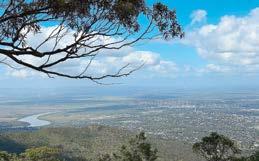

port the resources industry and associated supply chain, it demonstrates the capability and capacity of the local businesses we have in our region and job opportunities that the resources industry, plus other energy and renewables industries provides our local community.”
Cr Burnett said the strong resources industry results come at a time when the building blocks continue to be laid for Gladstone’s long-term future, especially with the Harbour City’s growing reputation as a hub for renewable projects.
“We know that our region’s economic drivers will shift over the coming years and that is one of the reasons that council undertook the work associated with its 10-year Economic Transition Roadmap to support and guide the region,” he said.
A buoyant Central Highlands resources industry injected $3.2 billion into the local economy’s gross regional product in 2023-24, up $500 million on the previous year.
A total of $1.4 billion flowed into 670 busi-
nesses, down from 682 businesses in 2022-23, and 143 charities and sporting clubs benefited through sponsorships and grants.
Total direct and supply chain employment was 14,197, accounting for 83 per cent of jobs regionally, up from 12,690 in 2022-23.
Resources wages dropped from $478m and 3396 jobs to $396m and 2941 jobs as the industry streamlined operations across the Bowen Basin.
Central Highlands Development Corporation chief executive officer Peter Dowling said the report findings were positive for the economic pulse of the region.
“It’s obvious the resources sector is still a dominant contributor to our region, both economically and socially,” Mr Dowling said.
“The data presented at the recent QRC forum (in Emerald) details the impacts that they have and the benefits they bring to the region.
“We look forward to continuing to encourage our resource sector to look at ways in which they can engage with local suppliers and local communities in their plans to further enhance the region’s prospects and liveability.”





Mr Dowling said the resource industry’s input was integral to the development of the CHDC’s Workforce Development and Accommodation Strategy.
“The Central Highlands resources round table is a grouping of our resource companies within the region and they have been direct in their support for the workforce and accommodation strategy and talent attraction campaign that we have recently rolled out,” he said.
“They are the prime drivers behind it, as well as other parts of our community, so they’re very clear as to their need to contribute to liveability and other aspects in the region to maintain and sustain their workforces as well.”
Central Highlands Regional Council Mayor Janice Moriarty said the report confirmed how important mining is to the region.
“Working together we can build on the success of Queensland’s mining sector and continue to enjoy the jobs and prosperity mining delivers to the Central Highlands and beyond,” Cr Moriarty said.
The Beef Capital’s economy recorded a $450 million drop year on year from the resources industry according to the report.
The gross regional product for 2023-24 totalled $1.992 billion, down from the figure of $2.442 billion in the previous financial year.
It accounts for 23.7 per cent of Rockhampton’s total gross regional product, down from 38 per cent 12 months earlier.
The impact of Beef2024 on the economy and tourism growth were other key factors in what is a changing economic landscape.
The resources industry supports 10,627 jobs in Rockhampton, accounting for 24.5 per cent of the region’s total employment.
A total of $695.3 million flowed into 648 businesses, with resources wages dropping to $234.2 million from the reported $258.7 million in 2022-23.
BANANA
The report highlighted the pivotal role the resources industry plays in the Banana Shire.
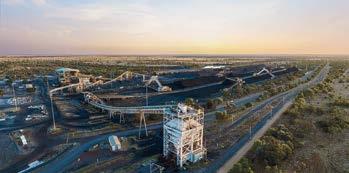
Gross regional product grew $70 million year on year, up to $1.421.6 billion for 2023-24.
That represents 53.4 per cent of Banana’s total GRP, with three out of every four jobs (76.9 per cent) in the municipality supported by the resources industry.
Wages grew from $169.5 million in 2022-23 to $194.7 million in 2023-24, with increases in business purchases, community and local government payments.
There was recorded growth in the local suppliers used, going from 336 in 2022-23 to 357 in the past financial year.
LIVINGSTONE
The report highlighted a drop in the gross regional product across Livingstone Shire in the past 12 months from $1.017.9 billion to $903.9 million.
Resources industry employees based in Livingstone SHire were paid $205.6 million in wages, down from $226.2 million.
Total direct spending dropped nearly $55 million from $482.2 million to $427.5 million, although the use of local suppliers rose from
172 to 175.
The resources industry accounted for 41.6 per cent of Livingstone’s gross regional product.
It supports 5,524 jobs or 25.9 per cent of the Shire’s total workforce.
The QRC report revealed the total statewide economic impact of the Queensland mining and energy sector this year was a record $120.2 billion – the largest contribution recorded since the QRC began its yearly reports in 200910 and the fifth consecutive year a record has been achieved.
“This result represents much more than just a significant boost to the regional and state economy. It also highlights the diverse social benefits generated by the resources sector that make a real difference in people’s lives,” Ms Hewson said.
“Our sector proudly supports jobs, businesses and supply chains, as well as services, infrastructure, community groups, charities and sporting clubs in regional areas across Queensland.”


In a major win for Central Queensland mining communities Peabody has re-opened its privately-owned Ellensfield Road to light vehicles improving access between communities including Glenden, Moranbah and surrounding areas from Tuesday, 3 December.
The private road provides an important connection between the Suttor Development Road and Red Hill Road, reducing travel times for north and southbound travelers.
Built initially for mine-only access however used frequently by the local residents and travellers, the road closed to the public in 2021 when Peabody’s Centurion mine was idled due to an earlier mine fire.
However, as the steelmaking coal mine cranks back into action with first development coal already produced in June, the company has decided the time is right for it to re-open.
Peabody’s Underground Operations vice president Mike Carter said Ellensfield Rd was a vital link for local community members and travellers around the company’s Centurion Mine Complex north-east of Moranbah and Peabody was pleased to once again allow light vehicles to use the road for their day-to-day needs.
“Peabody understands how critical roads are to our regional communities, not just to conduct business, but to support local families to live the lives they deserve,” Mr Carter said.
“Our decision will open up opportunities for kids to participate in sport and cultural activities in larger towns, and to access important health and other services.
“Peabody has invested in road improvements including targeted surface upgrades, reinforced culverts and new signage to remind people to drive to the road conditions.
“We urge drivers to observe designated

speed limits and drive with care at all times to ensure themselves, their family and our own employees and suppliers are safe as they travel along the almost 20 kilometre stretch of bitumen.
“It’s also very important to note that the road will not be open to heavy vehicle traffic, including trucks servicing neighbouring mining companies, unless strictly authorised by Peabody.
“The damage caused by heavy vehicles use will raise the costs of maintenance to unsustainable levels.”
In the lead-up to the decision, Peabody and
the Isaac Regional Council worked constructively to deliver the outcome and council mayor Kelly Vea Vea welcomed the announcement.
“The reopening of Ellensfield Road really is a great early Christmas present for our local communities and I applaud Peabody for this initiative,” Cr Vea Vea said.
“Council was pleased to work with the company to ensure reduced travel times between Glenden and Moranbah and to open a muchneeded alternative access route for locals, tourists and business travellers.
“I want to reinforce Peabody’s request that everyone using the road must respect speed
limits and drive carefully to ensure it remains open to community use.”
Ellensfield Rd remains closed to heavy vehicles.
Certain heavy vehicles, such as school buses and agricultural vehicles can apply for authorised use.
Light vehicles must have a maximum Gross Vehicle Mass of 4.5 tonnes.
The Centurion Mine Complex is Peabody’s premier hard coking coal project, set to supply high quality steelmaking coal to meet global demand with first longwall coal expected in early 2026.
By Poppy Johnston, AAP
Long-awaited mortgage relief looks closer as the central bank takes another interest rate hike off the table and lays the groundwork for future cuts.
Green shoots are appearing for mortgage holders as the Reserve Bank of Australia sees more signs inflationary pressures are easing.
While keeping the cash rate on hold at 4.35 per cent on Tuesday, 10 December, the central bank board made a more dovish pivot than most economists were expecting, improving the chances of a February cut.
While governor Michele Bullock said neither a cut nor a hike were explicitly discussed at the two-day board meeting, she confirmed a deliberate shift in language to reflect “mixed” economic data “that was, on balance, a bit softer than we had expected”.
“This has given the board some confi-
dence that inflationary pressures are declining, but risks remain,’ she said in the postmeeting statement.
“The board needs to be confident that inflation is moving sustainably towards the target,” she added.
“And for this to occur, we need to see more progress on underlying inflation coming down.”
Australia’s economic growth report for September undershot expectations, as did wage growth.
Moody’s Analytics economist Harry Murphy Cruise highlighted a “considerable shift in tone” at the December meeting, including the disappearance of the phrase “not ruling anything in or out”.
“Ironically, that omission effectively rules out a hike,” he said.
With another interest rate increase off the

table and a dovish pivot under way, Mr Murphy Cruise said the inflation fight was entering its final stages.
While still of the view May is the most likely time for easing to begin, there were indications it could come sooner.
AMP chief economist Shane Oliver said the RBA “should” start cutting in February but was sticking with his May call, for now.
“As a result of weak growth and ongoing evidence of falling underlying inflation we think the RBA should be cutting sooner rather than later, ie, in February,” he said.
“But while the RBA has become more dovish, it still doesn’t appear to be in a hurry to cut as it waits for some more confidence ‘that inflation is moving sustainably towards target’.”
At its meeting today, the Board decided to leave the cash rate target unchanged at

4.35 per cent and the interest rate paid on Exchange Settlement balances unchanged at 4.25 per cent.
After the decision, money markets were more optimistic about a February cut, pricing in a 65 per cent chance and nearly two cuts priced in by May.
Treasurer Jim Chalmers welcomed the RBA board’s improving confidence in the inflation outlook and said price pressures had been the government’s focus.
“I’ve been focused on my job, which is fighting inflation without ignoring the very substantial risks to growth,” he told reporters.
Shadow Treasurer Angus Taylor said it was clear the economy was “sick”.
“It’s very clear from the statement that came from the Reserve Bank today that underlying inflation remains too high,” he told reporters.
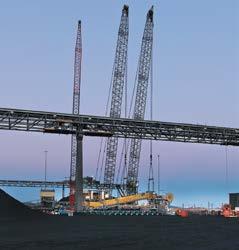


By Shelby Gurney
Stanwell representatives provided an update on the progress of the Central Queensland Hydrogen Project (CQ-H2) to Gladstone Regional Council last month.
The CQ-H2 is a global collaboration involving domestic and international partners from across the hydrogen supply chain who have come together to develop a global-scale renewable hydrogen project located near Gladstone.
A new addition to the CQ-H2 project is the Ammonia Synthesis Plan, the team said they have always had this as part of the overall plan.
In previous meetings, they discussed the supply of hydrogen for an ammonia production facility that was being developed by a sep-
arate consortium of companies.
Stanwell recently made the decision to incorporate that ammonia plant into their project scope which enables them to better coordinate and facilitate the overall supply chain.
Stanwell Corporation’s general manager of hydrogen products Phil Richardson said it was important to provide an update to the Harbour City’s councillors.
“We’re creating a new lower carbon portfolio that’s complimented by energy storage, to help drive the transition of our business to renewable energy,” he said.
“We have more than 4000 megawatts already of renewable energy and storage in our portfolio and we’re aiming to secure 10,000 megawatts by 2035 along with 5000 megawatts
of firming to help transition the business.
The project objectives for CQ-H2 are uniquely placed to achieve several objectives for Queensland and the key trading partners.
They include domestic decarbonisation of hard-to-abate, value-adding, and tradeexposed industries which are positioned to supply hydrogen for ammonia, green iron and methanol to economic transition for Central Queensland.
The Stanwell CQ-H2 team are working with the Gladstone Engineering Alliance and other economic development organisations in Central Queensland.
The CQ-H2 project is also set to provide long-term benefits for Gladstone and Central Queensland, including extensive engagement
with focus group sessions, sponsored events and cultural clearance surveys and the ability to attract and retain families in the Gladstone region and more.
Stanwell’s access approvals and stakeholder management lead Robert Ully said the impact of the project would be felt throughout the Gladstone region.
“Another thing we’re looking from the social impact assessment is healthcare, childcare, schools. I don’t think our apprenticeships will just be for the project, it will be communitybased as well, so those services impacted, so homegrown talent is developed,” Mr Ully said.
“Looking forward we will have a community investment strategy that’s currently being developed.”
Bursary applications are now open for the Iwasaki Foundation bursaries of up to $12,500 per year for Central Queensland students wishing to attend university to study for a bachelor’s degree, who without financial assistance would not be able to do so are available.
Iwasaki Foundation chair Vicki BastinByrne said the foundation was proud to assist local students achieve their academic goals by providing financial assistance with rent, textbooks, devices, uniforms, stationery, placements, and any other items necessary for their study.
“Many of our students have expressed the relief they feel when they receive a bursary and the difference it then makes to their grades,” Ms Bastin-Byrne said.
“The bursary program to date has helped over 61 people pursue their tertiary education ambitions and currently we have had nearly 40 of those actually graduate with a bachelor’s degree.
“It is very important for applicants to first read the bursary application guidelines that

can be found on the Foundation website before sending in an application, to ensure that they satisfy the eligibility criteria.”
The bursary is for the duration of participants chosen course and is available to new students, or those who may have already
started university.
There will be at least four new bursaries available for 2025, so directors are urging students in the CQ region who are considering going to Uni or those who may have already started studying, and who need financial support to continue, to please contact the Foundation office for further information on 0487 110 191.
Preference is given to students attending CQUniversity, but the Iwasaki Foundation understands that some courses are not always available at CQU, so those going to other universities may also be eligible.
Full terms and conditions can be found on the foundation website www.iwasakifoundation.com.au
Applicants need to complete the bursary application form which can be found on the Iwasaki Foundation website and forward it to the foundation office at info@iwasakifoundation.com.au
Applications close on 18 February, 2025.





Powerlink’s Transmission Network Forum revealed Gladstone’s longer-term forecasts illustrated an increase in demand.
More than 600 industry stakeholders met in Brisbane last month for the annual forum.
Powerlink’s chief executive officer Paul Simshauser delivered his annual ‘State of the Network’ address focusing on how the market will lead the second phase of the energy transition.
“Queensland has an enormous array of excellent future projects including wind, solar, batteries, pumped hydro and gas turbines, all of which are required for a secure power system and a successful energy transition,” he said.
“Over the last five to six years, there’s been more than $26 billion of investments in power generation assets, which shows the energy transition is well underway.
“The annual Transmission Network Forum gives us the opportunity to hear from community, industry and government representatives to ensure the transmission network continues to deliver the best possible outcomes for Queenslanders.”
Another key focus of the forum was the critical role Central Queensland will play in the Sunshine State’s electricity transmission network.
Powerlink’s Energy Futures general manag-
er Daniel Andersen said Gladstone was home to one of Australia’s busiest ports and multinational resource organisations.
“Gladstone is at the forefront of an industrial revitalisation which will set an example of how other load hubs across Queensland can transform,” he said.
“Gladstone accounts for 20 per cent of Queensland’s total load, with longer term forecasts showing a further increase in demand of between three to eight gigawatts comprised of industrial electrification and potential future hydrogen production.
“Our work in strengthening the electricity transmission network and developing market-
led renewable energy zones in the region will ensure the co-ordinated delivery of projects.
“This approach will also help to maintain power system security and reliability, while minimising the impact on communities and the environment.”
Powerlink has a number of projects in the region, including the Gladstone SuperGrid Training Centre and Transmission Hub, Calvale to Calliope River Transmission Line Reinforcement Project, Banana Range Wind Farm Connection Project and the Theodore Wind Farm Connection Project.

The Board, Executive and employees of Gladstone Ports Corporation extend our warmest wishes for a Merry Christmas and a safe and prosperous New Year.
We thank you for your invaluable support this year and we look forward to an exciting 2025.
Please be advised that GPC’s offices will be closed from Wednesday 25 December 2024 and re-open on Thursday 2 January 2025.
It was a three-day immersion into the dynamic world of Queensland resources for secondary students from the Banana Shire attending an Oresome Minds camp at Central Queensland University’s Rockhampton campus.
Eight students from Moura State High School and Redeemer Lutheran College (Biloela), attended the camp delivered by the Queensland Minerals and Energy Academy (QMEA) in partnership with Anglo American and CQUniversity.
The unique camp gave Year 10 students an opportunity to extend their science, technology, engineering, and maths (STEM) skills with practical experiments and insights into the important role engineering plays in the resources industry.
QRC Education, Skills and Diversity director Katrina-Lee Jones said the students got firsthand experience in engineering with experts from CQUniversity and the resources industry.
“During the camp the students have completed a practical physics project – building and testing the load capacity of a model PASCO boom crane,” Ms Jones said.
“They then got a real-world glimpse into crane operations and maintenance with a site visit to CQ Crane Hire.
“They have also completed a coal mining process activity, using geological data and available exploration equipment to estimate the time and resources needed to reach coal.
“It’s truly a unique experience for students thatcombinesacademicchallenges,networking opportunities and industry experience that’ll set them up for career pathways in resources.”
Dawson Mine general manager Matt Stevens said Anglo American was proud to sponsor a camp encouraging local students to consider the resources sector for a future career.

“The students completed the camp with a site tour of our Dawson Mine operations, giving them a special insight into the role engineering plays in the day-to-day operations of a mine site,” he said.









“Our team really enjoyed showing the students how the mine works and talking to them about their career journeys.
“I hope the site tour and camp activities
have inspired these young people to continue their study of physics at school and ultimately lead to a career as an engineer in the resources industry.”











Skills, royalties and decarbonisation have a surprising element in common, as revealed by the Bowen Basin Mining Club’s guest C-suite panel at their November luncheon.
That element is people – working together to solve the problems, seize opportunities and create a long-term future for the mining industry.
This year’s C-suite panel featured Nick Jorss of Bowen Coking Coal, Shane Hansen of Kestrel Coal, Danny McCarthy of TerraCom Limited and Craig McCabe of Jellinbah Group.
Over the lively 90-minute discussion, the panel covered topics from royalties to ESG, divestments, decarbonisation, critical industry skills shortages and safety.
Opening on royalties, the panel got straight to the heart of the matter: the outlook for change under the new government led by Premier David Crisafulli.
While election promises to maintain current royalty arrangements are not likely to change in the short-term, there is optimism around the ‘long game’ of industry and government sitting down to negotiate.
Nick Jorss believes this should happen in the near future.
“Older mines will deplete and shut down over time, so we need to be planning now to keep the pipeline of projects open and attractive to investors,” he said.
Danny McCarthy agreed, saying the costings and alternatives needed to be clear.
“Everyone’s project has a different cost base so a tiered option is difficult to orchestrate – it will take some cool heads and everyone to have a seat at the table to get a working solution on royalties,” he said.
Decarbonisation and ESG were also hot topics, with some frank discussion about the future of net zero and the energy transition for the sector.
While decarbonisation remains a priority in line with Safeguard Mechanism targets, views differed on the long-term outlook of the energy transition.
Some operations, like Kestrel’s single-mine operation, were heavily affected by Safeguard Mechanism legislation due to methane escaping ventilation.
Their solution, incorporating treating ventilation air and capturing methane to power the site, is in development, according to Shane Hansen.
“We’re looking at technology that treats ventilation air to reduce our emissions, as well as channelling some of that captured methane into gas-fired power,” he said.
“These solutions should be up and running in the next few years, with the opportunity to generate more Safeguard Mechanism credits than we’re using from our baseline.
“The capital investment was significant, but it was the push we needed.”
Other executives agreed that the focus of operations on reducing emissions made good business sense, with Craig McCabe calling the reduction of diesel a “mining engineering problem”.
Nick Jorss agreed, saying that at Burton mine alone, the cost of diesel for generation

was well over $1 million each month.
However, on a question around whether a switch from diesel power to coal-fired grid power was simply ‘shifting emissions’, Danny McCarthy made the point that site-level solutions aren’t going to solve bigger problems in the energy transition.
“The right thing to do is to transition to some other form of cost-effective sustainable energy but it must be done together – individual solutions aren’t going to move the needle enough,” Mr McCarthy said.
The theme of an industry-wide approach to problems continued throughout the discussion, particularly around regional liveability and skills.
A particular concern is the skills drain in the industry, both as experience leaves the workforce and other industries offer the same pay as mining.
“The grey hair and knowledge that’s leaving the industry isn’t being replaced in terms of breadth of experience, and compounding the problem is the fact that younger people aren’t willing to relocate to the regions,” Mr McCabe said.
“That presents a concern going forward, particularly with the Olympics and the building program that will lead up to 2032 – in terms of skills, we’ve already tapped most of the regions, and if qualified tradies or engineers can stay in
Brisbane and earn the same money, they will.”
Danny McCarthy agreed.
“We have a skills crisis, not a skills shortage,” he said.
“Until we face this reality, we’re not going to move the needle – we’re just stealing each other’s people from site to site.
“We need a whole-of-industry strategy to fix the skills crisis and ensure we have a pipeline of skilled workers for the future.”
Kestrel’s Shane Hansen also concurred saying the organisation faced significant challenges in attracting experienced trades people, operators and professionals who are in high demand, as many preferred flexible FIFO or DIDO over committing to residential roles.
Regional liveability compounds the skills crisis, which Nick Jorss believes is linked in part to a lack of investment in the regions.
Citing the example of the state of disrepair of the Peak Downs Highway, Mr Jorss said that the regions that generate royalties are overlooked.
“If people can’t be safe on the Peak Downs Highway while they’re driving to work to create royalties, why would they want to live in the regions?” he posed.
“There’s just not the pride in the industry that there once was – the regions that generate coal royalties should be seeing the benefit of that money.”
Danny McCarthy said that FIFO isn’t the answer to skills shortages either, even if direct flights are offered in and out of the Bowen Basin.
“While not everybody wants to live in Central Queensland, putting on planes and turning CQ into the Pilbara isn’t the answer either,” he saId.
“Regional liveability is really important – it’s not just about attracting the mining workers; it’s the support people and the families whose lives are regional.
“Pride in the industry is a big part of that: in the 90s, every kid whose parent was a miner saw their future in working at a mine, and that was a clear career path for them.
“You just don’t see that anymore.”
On predictions for 2025, people power was once again the focus of discussions.
Following a significant political shift in the regions, Danny McCarthy summed up the sentiment as a “groundswell of people with a voice who haven’t had one before.”
“There’s a realisation that voices are being heard around how tough it is in the regions –this is a space to watch in 2025, as the Bowen Basin is not to be underestimated,” he said.
Nick Jorss ended the event with a call to join Coal Australia and continue the growing momentum of grassroots support for the industry in 2025 and beyond.






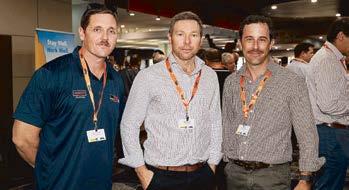






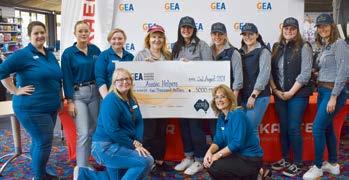
ADVERTORIAL
Gladstone Engineering Alliance (GEA) is excited to announce our signature event calendar for 2025, featuring a dynamic line-up of opportunities for connection, collaboration, and celebration across Central Queensland’s industry supply chain.
Mark your calendars for the following events:
INTERNATIONAL WOMEN’S DAY
LUNCHEON
• Friday, 7 March 2025
Embracing the 2025 theme, #AccelerateAction, this event marks a shift to a luncheon format, fostering meaningful discussions and celebrating the achievements of women in our region.
SUPPLY CHAIN EXPO
• Wednesday, 30 April 2025
A pivotal platform for supply chain businesses, the Supply Chain Expo showcases products and services while offering networking opportunities.
This event reinforces Central Queensland’s reputation as Queensland’s industrial powerhouse and strengthens relationships across the sector.
We welcome back the exclusive ‘Meet The Buyer’ sessions, held throughout the day.
This is a golden opportunity to connect directly with large industry and organisational buyers.
CHARITY GOLF DAY
• Friday, 15 August 2025
In 2024, we raised $5,000 for Aussie Helpers through our Charity Golf Day.
In 2025, we aim even higher!
This event creates the ideal environment for GEA members and non-members to connect outside the office, fostering future collaborations while giving back to a local community charity.
MAJOR INDUSTRY CONFERENCE
• Wednesday and Thursday, 15-16 October 2025
The conference is your opportunity to hear di-
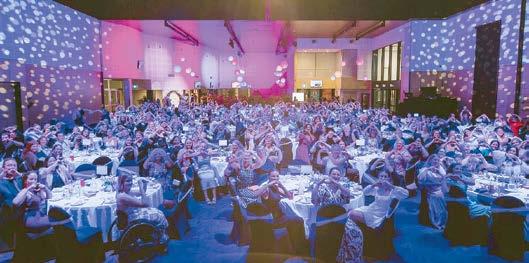
rectly about current and future major projects planned by Central Queensland’s industries.
Engage in insightful discussions, share knowledge, and be part of shaping the future of the industry.
In 2025, we will be introducing an exciting new format, designed to foster even more collaboration, innovation, and engagement.
This refreshed approach will enhance networking opportunities and create a bigger platform for meaningful discussions to drive the industry forward.
INDUSTRY AWARDS NIGHT AND GALA DINNER
• Wednesday, 15 October 2025
Celebrate the spirit of innovation, excellence, and collaboration within our thriving indus-
try supply chain at the annual GEA Industry Awards Night.
In 2025, we’re excited to introduce a new Social Performance Award category.
We’re committed to delivering exceptional events in 2025, designed to highlight and support the remarkable businesses driving growth in our region.
Sponsorship opportunities are now open for our five signature events.
Join us in shaping the future of our region and gain valuable exposure for your business by partnering with GEA.
To express your interest, email info@gea. asn.au or call the office on 4972 9060.
WHY JOIN GEA?
When you become part of Gladstone Engineer-
ing Alliance, you join a proactive and engaged alliance of Central Queensland industry supply chain businesses.
Our mission is simple: to help your business grow and prosper while establishing our region as a world-recognised Industry Supply Chain Hub.
From exclusive networking opportunities and advocacy to promotional services and major event access, being a GEA member places your business in the best possible position to thrive.
Let’s make 2025 a year of success for our region.
For more information on membership, upcoming events, or sponsorship, visit https:// gea.asn.au/ or contact us on (07) 4972 9060.






The next generation of explorers, engineers, electricians and environmental scientists were in Brisbane last week for a unique camp inducting them as Student Ambassadors for the Queensland Minerals and Energy Academy (QMEA).
The 20 ambassadors entering Year 12 in 2025 were selected after a competitive and statewide process from QMEA schools.
The students hail from Central Queensland, North Queensland and Brisbane.
The four-day camp immersed the student ambassadors into the world of mining, minerals and energy and introduced potential career pathways in resources.
The QMEA is the education arm of the Queensland Resources Council (QRC) and has been facilitating the Student Ambassador program for more than 10 years with many of the student alumni pursuing university STEM studies and trade apprenticeships after school.
QRC Skills, Education and Diversity director Katrina-Lee Jones said the student ambassador program had been designed to expand the students’ knowledge of the resources industry and build their leadership skills.
“The students have a keen interest in STEM and the trades, being QMEA ambassadors will give them great connections with the resources industry and help guide their tertiary study or apprenticeship choices,” Ms Jones said.
“The 2025 ambassadors are impressive and represent our future workforce that will play a role in driving innovation, production and sustainability in the sector.”
During the QMEA ambassador camp the students:
• Took a tour of the engineering facilities at The University of Queensland, including the Civil Lab and Hypersonic Lab, where experiments on space concepts like the speed of light are conducted;
• Visited Glencore Technology facilities where they got a demonstration of chemical and mechanical processes and took a remote tour of the Isa Mill through virtual reality (VR) technology;
• Learnt more about the energy sector with a visit to Origin’s head office and Genuity’s energy trading floor;
• Had a tour of Core Resources’ Albion laboratories, discovering more about the critical role of innovation, exploration and careers in chemical and process engineering;
• Visited the Safety in Mines Testing and Research Station (Simtars) to observe how the industry tests and manages health and safety risks like dust, gas, spontaneous combustion and emergency response procedures;
• Checked out Hastings Deering’s Acacia Ridge facility where they had hands-on experiences in the auto electrics and diesel training centres and tried out the VR simulation units for operating excavators and haul trucks; and
• Toured BHP’s Integrated Remote Operations

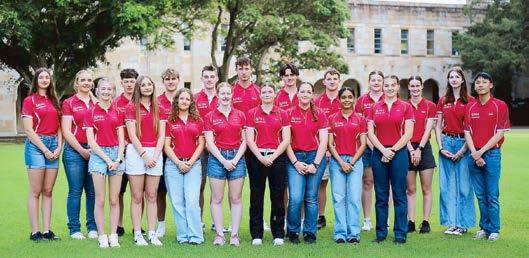
Centre (IROC) in their Brisbane head office and found out more about BHP’s career pathways including apprenticeship, graduate, and internship programs.
Ms Jones said the support of QRC members was pivotal to the success of the program.
“The camp was a unique experience for the students and has set them up to be wonderful ambassadors for the QMEA in 2025 as we celebrate 20 years of education, training and skills,” she said.
The QMEA is a partnership between the QRC and the Queensland Government under its Gateway to Industry Schools program.
The 2025 QMEA student ambassadors are:
• Aiden Peterson (Moranbah State High School)
• Amy Harlow (Mackay State High School)
• Ava Kaluzyn (Bundaberg State High School)
• Brodie Ernst (Kirwan State High School)
• Demi Hughes (Pioneer State High School)
• Faith Douglas (Cloncurry State School)
• Jason Ly (Glenala State High School)
• Jada Baggow (Moranbah State High School)
• Jodi Lawn (Emerald State High School)
• Kate Bateman (St Margaret’s Anglican Girls School)

• Leni McKenna (Wavell State High School)
• Leon Marek Fish (Kawana Waters State College)
• Lilly Brady (Bundamba State Secondary College)
• Lucy Donohoe (Moura State High School)
• Maya Teerink (Kawana Waters State College)
• Mitchell Kerr (The Cathedral College, Rockhampton)
• Monisha Kiri (Mansfield State High School)
• Oscar Tranberg (The Cathedral College)
• Slater Gifford (Dysart State High School)
• Trinity Shannon (Gladstone State High School)



By Matthew Pearce
Nine businesses and individuals were honoured at the 2024 Best in Business Awards, but the major winner had no idea they’d won until after the fact.
With funding short, Our Space service manager Jessie Conway said she hadn’t attended the awards ceremony at the Keppel Bay Sailing Club conference centre on Friday, 29 November, and didn’t realise the service had won Best Overall Business and Best Community Enterprise until she saw it online.
Located opposite ANZ Bank at Stockland Rockhampton, Our Space facilitates early intervention for at-risk youth, reducing disengagement and offering health and wellbeing support.
The free-to-use safe space was born out of discussions between the Community Policing Board, Stockland, Darumbal Youth Service, Queensland Police Service and Youth Justice and first opened in 2020.
During the week, the space is open after school, and on Thursdays it stays open until after 8.30pm, when they hold their weekly outdoors programs near the pool in the Stockland undercover car park.
“I’m very excited, it’s a fantastic thing for us to show that we’re actually making a difference,” Ms Conway said.
“We have been trying to get our name out there and the nomination process is very simple.”
Hosted by Capricorn Enterprise and the Capricornia Chamber of Commerce to celebrate the remarkable achievements of local businesses and individuals, the 2024 Best in Business Awards has been hailed as a huge success, with a sold-out crowd of 230 guests attending the ceremony.
Television personality Kimberley Busteed captivated the audience with her signature charm, seamlessly guiding the evening’s proceedings.
Guests later took to the dance floor to enjoy the soulful beats of Gold Coast band 33 Red, ensuring the festivities continued well into the night.
Nine independently judged awards were presented alongside the highly anticipated People’s Choice Award, which garnered nearly 2,400 votes to crown Vector Health and Performance as this year’s winner.
The evening also highlighted the region’s generosity, with proceeds supporting CQShines Foundation and Fitzroy Community Hospice. Each charity received a $6,000 donation, presented during the events.
Capricorn Enterprise chief executive officer Mary Carroll applauded all winners and nominees, proud to see our local community continuing to develop and evolve.
“Congratulations to all winners and nominees - you are the heart of what makes the



region such a vibrant place to live, work, and invest,” she said.
“Everyone who attended the 2024 Best in Business Awards represents the best of what our community has to offer, and it was an honour to celebrate local achievements from across our region.”
Capricornia Chamber of Commerce president Jason Foss expressed his pride in the fourth annual awards, acknowledging the high calibre of this year’s nominees.
“These awards have become a highlight on our calendar, and I’m immensely proud to see them continue to grow and showcase the exceptional talent within our region,” he said.
One of the independent judges, Jennifer McGuire from AusIndustry, reflected on the judging process, which included shortlisting finalists, conducting Zoom interviews, and
evaluating winners.
“It was no easy task to select the winners, given the exceptional talent across all categories, and on behalf of the judging panel, we extend our congratulations to all nominees, finalists and winners,” she said.
The judging panel also included Elize Hattin from Elize Hattin Business Coaching Group, Rees Banks from Regional Development Australia, and Mick Allen from Queensland Building and Construction Commission.
Sponsors of the awards included: Capricorn Coast Eco Destination, Elite Real Estate, Evans Edwards, IPA by Synergie, JRT Group, Keppel Eats, McDonald’s Family Restaurants, Stanwell Corporation, Tanners Bitumen and Asphalt, Vector Health and Performance, Reef
and
World-leading sleep researchers at CQUniversity have received Federal Government support to unlock optimum napping on the job for shiftworkers.
Research shows that a nap on night shift can reduce sleepiness and improve performance.
But is there a perfect length of shut-eye to optimise alertness and productivity?
CQUniversity sleep researchers Dr Grace Vincent, Professor Sally Ferguson, Dr Madeline Sprajcer, and Associate Professor Matthew Thomas from the Appleton Institute have received an Australian Research Council (ARC) Discovery Project grant to find out – and help more than 2 million Australian shiftworkers.
The three-year, $877,410 project will utilise the Appleton’s world class sleep laboratory in Adelaide to assess how performance and productivity changes with different nap lengths –and Dr Vincent says the innovative approach fills a yawning knowledge gap.
“We know the benefits of naps, but no study has assessed nap timing against whole of shift productivity or safety outcomes,” Dr Vincent said.
“The nap needs to be long enough to help the shift worker feel refreshed but still fit within their work duties. We also need to keep in mind that people often feel groggy and take a bit of time to fully wake up after a nap.”
“This project will fill this gap by systematically evaluating different on-shift nap durations and finally give us evidence-based guidelines for workplaces that want to improve productivity while minimising disruption.”

The ARC-funded initiative is one of 536 project to share more than $342 million, announced under the latest round of Discovery Projects scheme.
Dr Vincent, who has spent the past decade researching sleep in workplaces, said night workers are almost twice as likely to make an error, be injured at work, or have an accident.
“Workplaces need strategies built on the
Banana Shire Council officially opened the Moura Museum and Library on Monday, 2 December.
Mayor Nev Ferrier and Callide MP Bryson Head, the new assistant minister for Regional Development, Resources and Critical Minerals, were in attendance for the opening.
The project was made possible by a $6 million capital grant from the Resources Community Infrastructure Fund, with Banana Shire Council contributing an additional $2.3 million.
Such a level of capital investment in Moura’s infrastructure is a rare, once-in-a-century event.
Throughout the construction project, nearly $350,000 was contributed to Moura-based businesses in Moura and more than $5 million to industries across the Central Queensland region.
The state-of-the-art facility is designed to transform community access to education, culture and public services.
Spanning over 234 square metres for the library, 255 square metres for the museum, and an additional 150 square metres for the Council Office Meeting Room, this new facility promises to deliver a greater level of service to the Moura community.
“This is a fantastic addition to the Moura community and the entire shire,” Cr Ferrier said.
“It will provide a space with more services and improved facilities that meets both current and future demands for education, art, and cultural opportunities.”
The new facility will operate during regular hours, supported by council staff and volunteer hours, ensuring that the museum and library are open for a total of 60 hours per week.
Banana Shire said this represented a substantial increase from the previous 30 and 21 hours, respectively.
The library is significantly larger, offering distinct areas for youth, young adults, and seniors, along with indoor and outdoor activity spaces.
The library’s team plans to expand regular


and
programs from five to eight per week to meet growing community demand.
Patron numbers are expected to climb for both the library and museum.
“This facility is integrated with the Miners Memorial, honouring our mining heritage and the memory of those lost in tragic mining accidents. It will also be a drawcard for visitors, encouraging tourists to explore other locations across the shire,” Cr Ferrier said.
best available evidence to mitigate the adverse impacts of shift work on performance, productivity, and safety,” she said.
Earlier this year, Dr Vincent received an Australian Research Council (ARC) Discovery Early Career Researcher Award (DECRA), with $488,579 over three years to develop a digital sleep assistant.
The project will be undertaken at the Apple-
ton Institute, CQUniversity’s flagship research centre for behavioural sciences, which has a research focus on physical activity, sleep and biological rhythms, and operational readiness.
The research team also includes international collaborators Associate Professor Paul Patterson, Dr Cassie Hilditch, Associate Professor Philip Tucker, and Professor John Axelsson.
Queensland’s exploration sector is set to unlock significant new opportunities and generate further economic gains for the Sunshine State if governments can provide policy certainty.
The exploration arm of Queensland Resources Council (QRC), the Queensland Exploration Council (QEC), has released its 2024 Exploration Scorecard, outlining the opportunities and challenges facing the industry.
QRC chief executive officer Janette Hewson said exploration is key to the future success of Queensland’s resources sector.
“The 14th edition of the QEC Scorecard provides an important barometer of exploration in Queensland and there is a lot to be positive about,” Ms Hewson said.
“Queensland has world leading expertise, data and technology underpinning our sector that can unearth reserves of the coal, gas, metals and critical minerals the world demands.
“These are the commodities that are needed to meet current energy and infra-
structure needs, and for the technology of the future to reach global decarbonisation targets.
“While there is strong positive industry sentiment about the significant potential for explorers, policy uncertainty, regulatory changes and rising costs are impacting investor confidence.”
QEC chair Kim Wainwright said the scorecard highlights the need for a clear and certain pathway to production to attract and sustain investment in exploration.
“Queensland’s extensive resource base and skilled workforce position us well for future growth, but we must address the policy and regulatory challenges to unlock its potential,” Ms Wainwright said.
“The QEC Scorecard is a call to action for all stakeholders to ensure Queensland remains an attractive destination for exploration investment.”
Ms Hewson said the QEC Scorecard highlights trends that should inform long-term decision-making and policy settings to position Queensland as a resources growth state.

By Shelby Gurney
The 10th annual Gladstone Harbour Report Card is in.
Following two years of C gradings, the harbour has now earned a mark of B from the Gladstone Healthy Harbour Partnership’s (GHHP) Independent Science Panel.
The fresh result is down to an improvement in the health of local seagrass and juvenile fish.
To mark the partnership’s decade-long milestone, this edition of the report card also includes trend graphs for key environmental indicators such as water and sediment quality, seagrass and mud crabs, visually illustrating the results obtained over the past 10 years.
What began with a pilot report card in 2014 that assessed the harbour’s health across six basic indicator groups, now provides an annual in-depth assessment of 33 different indicators.
Currently, there are 25 partners within the partnership ranging from federal, local and state governments to industry, First Nations people and community groups who contribute.
Independent Science Panel chair John Rolfe said the report focuses a lot on the environmental impacts, but it also assesses the social, cultural and economic components.
“We know the harbour is really important to those who live in the region, so we try to approach it with a more holistic view of the assessment,” he said.
“Within the environmental component, we assess the water and sediment quality, we’re interested in checking there are no contaminants.
“We also assess the key ecosystems which are coral, seagrass and mangroves and biodiversity including fish and mud crabs.
“We can’t do everything, so we try to pick some indicators in each of those groups that do

the most important things.
“By monitoring and reporting each year, we’re a bit like a fire-alarm, we can then signal when there are pressures in the system.
“We give an overall assessment by averaging all of the scores across these different indicators in the harbour.”
Prepared by the panel, the resultant data provides a holistic and accurate assessment of the environmental, social, cultural and economic health of the Gladstone Harbour, with each indicator graded from ‘very good’ (A) to ‘very poor’ (E).
The Water and Sediment scores remained ‘very good’ (A) for the 10th consecutive year,

launched. (GAWB).
Gladstone’s first-ever Empowering Women in Cricket program has officially launched thanks to a partnership between The Glen Cricket Club and Gladstone Area Water Board (GAWB).
GAWB chief executive officer Darren Barlow said the organisation is thrilled to support a program giving local women the chance to try a traditionally male-dominated sport.
“We’re proud to be part of Empowering Women in Cricket, which not only encourages participation but also creates competitive opportunities and helps develop the technical skills of the 40 women who have signed up for the inaugural season,” Mr Barlow said.
“It’s fantastic to see these players - many of whom are picking up a bat and ball for the first time - taking to the field and playing cricket.”
The partnership is part of GAWB’s new community investment initiative to sponsor
two local sports teams each year - one in the summer and one in the winter.
The Glen Cricket Club president Bede Bouzaid said the club was grateful for GAWB’s support.
“This sponsorship has enabled the club to purchase new equipment and uniforms for the teams, significantly easing the financial burden on the players,” he said.
“We’re passionate about cricket and committed to growing the sport in Central Queensland.
“We’re thankful to GAWB for helping bring Gladstone’s first women’s cricket competition to life.”
The inaugural women’s cricket season ran for four weeks, with a new season scheduled for February 2025.
Organisers are hopeful more teams will join in 2025.
Community groups and sports clubs can view GAWB’s community investment guidelines at gawb.qld.gov.au.
also contributing greatly to the high overall results.
Economic Performance was also assessed in 2024, which retained a very good (A) grade as a result of high scores in shipping and tourism.
Economic Stimulus also remained at a satisfactory (C), despite a slight decrease in score due to low employment rates.
Owing to stability of the indicators, the Cultural and Social components were not reassessed, and use the 2022 data, receiving a satisfactory (C) and a good (B) respectively.
GHHP chair Iain Gordon said the purpose of the report card was to provide the community across the Gladstone region with an un-
derstanding of the health of the harbour.
“It’s across four indicators including social, economic, cultural and environmental,” he said.
“The partnership was launched in 2014 as a result of a major fish kill event that happened in the harbour.
“The local community that uses the harbour were concerned about human influences on the environmental aspects of the harbour.
“We decided to launch the Gladstone Healthy Harbour Partnership to ensure we could monitor and allow that information to go and support the belief the harbour is in a healthy state.”
By Shelby Gurney
As Australia accelerates its journey towards a net zero economy Central Queensland is stepping into the spotlight, with Net Zero Economy Agency answering the question: how is today’s workforce being prepared for tomorrow’s jobs in renewable energy?
The launch of the Federal Government’s ‘Bringing New Energy to Australia’ campaign in Central Queensland celebrates the region’s key role in Australia’s energy transformation and showcases the people, businesses and industries working together to ensure Central Queensland communities share in the benefits of a net zero economy.
Key to this are training, reskilling and new employment opportunities for local workers - support that will empower them to become part of the new clean-energy workforce.
Central and Western Queensland Regional Development director Tony Gambling said growth in the renewables sector will see changes in the composition of the workforce, specifically creating new positions such as earthmoving, electricians, carpenters and joiners, plumbers, contractors, project and program administrators, and production managers.
“TheCentralQueenslandregioniscurrently experiencing a shortage of skilled workers and with the anticipated growth in the renewable sector this is expected to intensify,” he said.
“Proactive programs that aim to attract new tradespeople, upskill existing workers, develop employment pathways, and repurpose existing skills are working hard to address this issue.
“With growth in the sector, there will also be growing pressure for additional housing and lifestyle facilities to support the needs to attract and retain the skilled workforce which are also being addressed.”
The region’s economy is diversifying to include new industries of the future.
The Central Queensland Hydrogen Project is set to create $17.2 billion in hydrogen exports while also producing 8.9 thousand jobs.
As the region’s economy changes, it is creating new jobs in the renewable energy, construction and manufacturing sectors.

(File)
Alpha HPA is building Australia’s first highpurity alumina processing facility in Gladstone, with around 490 jobs created during construction and 200 on completion.
Powerlink’s interim training centre and transmission hub opened in 2023, and in 2024 the company welcomed its first intake of Gladstone-based apprentices to support critical projects in Central Queensland.
Hundreds of energy workers will be upskilled in areas including high-voltage technical training.
As part of its commitment to investing in the skills required for regional employment in green manufacturing, Fortescue plans to make the Gladstone Green Energy Manufacturing (GEM) Centre the site of its first Vocational Training and Employment Centre for Queensland.
In Gladstone, Renee Johnson used to work in food manufacturing before moving to Fortescue’s Electrolyser Facility as a production technician leading hand.
“I’ve been able to transfer my skills for my role here,” she said.
“I had a lot of support - Fortescue partnered with a local university which put us through hydrogen fundamentals and that really gave me a good understanding of how hydrogen works.
“In 10 years’ time I’ll be able to look back and say, ‘I helped build that’.”
In Central Queensland, regional workforce transition officers are on the ground working closely with local employment facilitators to assist with the region’s transformation to a net zero economy.
The best of central Queensland’s agricultural innovation will be on display during a new AgTech tour of the region in February 2025.
The CQ AgTech Showcase is a carefully curated road trip that will begin in the agricultural hub of Emerald, and make its way to the Beef Capital of Rockhampton and beyond to the Capricorn Coast, highlighting the region’s agricultural innovations and technology.
From February 14 to February 16, up to 50 participants will have the opportunity to visit start-ups and producer adoption sites, take part in masterclasses and taste local foods with regional produce and Indigenous food themed meals.
Event organiser Sonya Comiskey said central Queensland is an agricultural powerhouse and participants will see first-hand why the region is leading the way in agricultural innovation.
“The are some fantastic people and initiatives across Central Queensland and we’re excited to shine a spotlight not only on our innovators but also our fantastic region and agricultural sector.”
Ms Comiskey said the event is a unique collaboration of key players across the region’s agricultural ecosystem. These include the Department of Agriculture and Fisheries

Use Planning Co-operative (CHRRUP), Livingstone Shire Council and Advance Rockhampton and Agristart.
“Our guests to the region will gain access to some of Australia’s leading start-ups and initiatives such as global autonomous robotics innovator, SwarmFarm Robotics and DAF’sSmart Farm which will be showcasing the tech they have in the field,” Ms Comiskey
said.
“Visitors will see Northern Australia’s only operational inland port and participants will hear from local producers about their agriculture technology adoption experiences.
ThetourwillstopatRookwoodWeirwhich has been the catalyst for some major innovation projects in the area such as a new feedlot development by Mort & Co which uses using circular economy principles to make fertiliser from waste.
CQUniversity will also throw open the doors of the Central Queensland Innovation & Research Precinct in Rockhampton where guests can explore some of the world-leading research being carried out within the Institute for Future Farming Systems.
The CQ AgTech Showcases is a sideline event to evokeAg in Brisbane on February 18 and 19.
“The CQ Agtech Showcase tour will be a highly experiential visit that sparks impactful conversations, connections and insights about the central Queensland agriculture sector.
“It is the ultimate way to kick off the evokeAG 2025 experience.”
Expressions of Interest are now open for the CQ AgTech Showcase.
What’s better than one gold?
Two of course.
That was the case for Beef Australia with Beef2024 delivering two major category victories at the 2024 Queensland Tourism Awards in Brisbane on Friday, 15 November.
Beef2024 earned gold in the Major Festivals and Events category and the Excellence in Food Tourism category.
Beef Australia chairman Bryce Camm said both award wins reflect Beef Australia’s ability to generate economic activity for Queensland.
“Beef2024 has been recognised as Queensland’s top major event and a key player in food tourism at the state’s premier tourism awards, highlighting the vital role Beef Australia’s triennial event plays in the state’s economy,” Mr Camm said.
“This year Beef2024 set new records, creating a direct and incremental expenditure impact for the Greater Rockhampton Region of $102.0 million, and $69.6 million for Queensland’s economy.
“Beef Australia is much more than an event; it is a celebration of our beef industry, a catalyst for regional economic development, and a key contributor to the growth of tourism in Queensland.
“We are extremely proud to win this award, which reflects the hard work and dedication of all who make this event possible – our volunteers, committee members, sponsors, competitors, exhibitors, staff, fellow board directors, and our guests.”
Beef Australia chief executive officer Simon Irwin said both awards cement Beef Australia’s position as one of Queensland’s most celebrated and iconic events attracting global audiences.
“Over 125,000 walked through the gates at Beef2024 with 62 per cent of individuals coming from outside the Greater Rockhampton Region,” Mr Irwin said.
“The size and complexity of the event is outstanding; with 276 ticketed events and over 300 free events, 4,509 cattle entrants, 617 registered international delates from across 39 countries and a further 1,200 international visitors attending the event, 5,133 school students, 604 trade sites, 10 celebrity chefs, 34 food vendors and three onsite restaurants, 35 entertainers, 65 seminars and tech talks, 17 property tours and 200 volunteers, the event is truly like no other in Queensland.
“And for those who couldn’t make the iconic event, our Beef TV program reached over
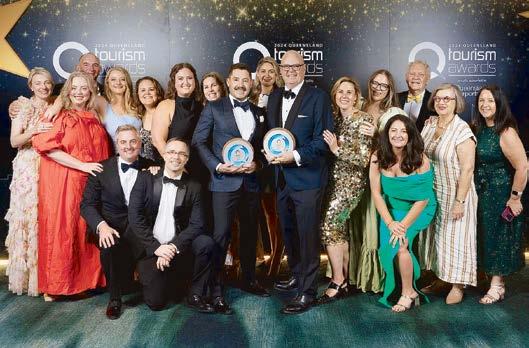
79,000 people with 60 per cent of those viewers from overseas.
“We also focus on showcasing Australia’s beef industry through food - from live cooking demonstrations and farm tours to showcasing local beef producers and supporting local restaurants with beef on the menu, we are honoured to be recognised for being a key player in promoting food tourism.
“This award recognition reinforces the event’s critical role in driving Queensland’s tourism economy and celebrating all facets of Australia’s beef industry.
“On behalf of the organisation and board of directors, I’d like to once again thank our local, state, and federal government partners, our competitors, sponsors, and the local community who have all been instrumental in the event’s success.”




I was on the phone, talking to a person in Barcaldine, and as you do, the weather came up in conversation, I said, “I see you’ve had a bit of rain lately,” the response received, caused me to pause, “yeh, there was even snow last week.” Is that even possible, I momentarily thought!
It was a snow machine, creating snow at the Christmas function, organised by the regional council, in Barcaldine.
Brilliant, what a brilliant idea, imagine how many people shared images of their children standing beside Santa, with snow falling on them, in the middle of the Queensland outback, in the historical town of Barcaldine.
A town that can now also boast the Australian record for the biggest collection of snow globes.
Snow globes, those decorative glass, liquid filled, ornaments that when you turn them over, small white particles (snow) fall, then as you place it correctly back on the shelf, the snow falls on the scene inside the globe. Again, what a brilliant idea on getting more exposure for Barcaldine, and tackling head-on the usual perception of the region, this time of year, that it is a hot place.
But it was not just an attention-grabbing idea, it was a community building exercise.
As to collect the 356 snow globes involved almost every of the schools in the region. Students (families) from schools in the small towns of Muttaburra, Jericho, Aramac, and Barcaldine, either acquired or made the snow globes. They all contributed to creating a new Australian record.
That is something each student will remember 2024 for.
And it was not just residents of the Barcaldine region that contributed to the record collection.
Snow globes were also sent in from other parts of the state and the country to be part of the record collection.
There were snow globes from Cairns, Innisfail, Adelaide, Sydney, Melbourne and even snow globes collected by friends and family on holiday from locations far away as Hawaii, Japan, Cambodia, and Vietnam and sent on to Barcaldine for the quest.
Then, there is the bigger picture strategy.
To encourage more people to work and live in the region.
Outback Queensland, arguably has a

perception image to overcome, to attract new residents.
The perception of a hot, and often dry place, with a dwindling resident population. Yet, there are plans to double the population of the Barcaldine region in the next 10 years.
BREZ, Barcaldine Renewable Energy Zone, being the major catalyst for the creation of new jobs in the region.
To help address the image issue, Council has built a water recreation park.
Built to Australian and international waterskiing standards! Then, there is their annual garden competition and expo. Barcaldine is known as the garden city of the outback, partly attributed to the quality of their artesian water.
Every one of its streets are named after
trees.
Now add snow and snow globes to the famous Barcaldine name, you start to get people seeing that part of Outback Queensland in a different light.
And in 2025, Barcaldine will be on the track of the Great Australian Charity Cattle Drive, which involves droving 2000 head of cattle from Longreach to Roma.
The drive will raise funds to provide protein meals for Australians suffering food insecurity.
An event that should gain national and international media attention.
And, if you mention Barcaldine, it would be remiss not to mention the Tree of Knowledge, which the shearers sat under in 1891, voting to take strike action, ultimately leading
to the creation of the Australian Labor Party.
An event that is fittingly celebrated, each year, on the Labour Day long weekend in May, with the Tree of Knowledge Festival.
In an area as vast as the Queensland outback, the Barcaldine Region is working hard to enhance its own identity, appeal, and brand. It provides an example for other small regional and rural communities, it is not how big the project or budget is, it is how big the idea is.
Like making it a white Christmas in Barcaldine, even if it is for just the one night.
Merry Christmas everyone, thank you for reading my columns.
May 2025 bring widespread rain, peace, and more tourists, plus residents, to regional and rural Queensland.
By Federal Treasurer Dr Jim Chalmers
Late last month I met with my state and territory counterparts in Canberra to progress substantial economic reforms that will benefit all Australians.
Together we advanced our productivity agenda, including a landmark agreement on national competition policy and made progress on our commitment to deliver 1.2 million homes across the country.
The Council on Federal Financial Relations (CFFR) met to agree a 10-year reform of National Competition Policy that will deliver enduring benefits for Australians, underpinned by the Albanese Labor Government’s $900 million National Productivity Fund.
Productivity Commission modelling shows this reform, which includes Commonwealth and state-led projects, could deliver a boost to GDP of around $5,000 more for every Australian household, every year, while driving down prices across the economy.
It’s a central part of the productivity reform agenda CFFR is recommending to National Cabinet.
This agenda also includes reform priorities under the five pillars of productivity, including regulatory reform to help us deliver the net zero transformation, and strengthening the Report on Government Services to drive productivity improvements in the non-market sector.
CFFR made progress under the National Housing Accord, with a focus on advancing recent reforms and ongoing work of the states and territories and local governments.
We will continue to focus on unlocking labour, land and finance to help all levels of government deliver on the ambitious target of 1.2 million new homes across the country.
Next steps on agreements for hospitals

funding and the NDIS reforms were discussed, with work to continue on detailed implementation of the December 2023 National Cabinet agreement.
Treasurers agreed on an extension of the GST No Worse Off Guarantee funding agreement from 2027–28 through to 2029–30, giving states and territories funding certainty so they can continue to deliver the essential services
Australians rely on.
Before CFFR meets again next year, treasuries will develop options to address the declining diversity in economics student cohorts.
These steps are important for enhancing the quality of economic debate and policymaking in Australia.
In addition, treasurers will explore legislative options for a nationally consistent ben-
eficial ownership of trusts regime — to ensure transparency over who owns, controls or receives profits from companies and other legal vehicles.
We are grateful to state and territory treasurers for their collegiate and frank engagement in this meeting and through regular discussions and look forward to meeting again in 2025.









